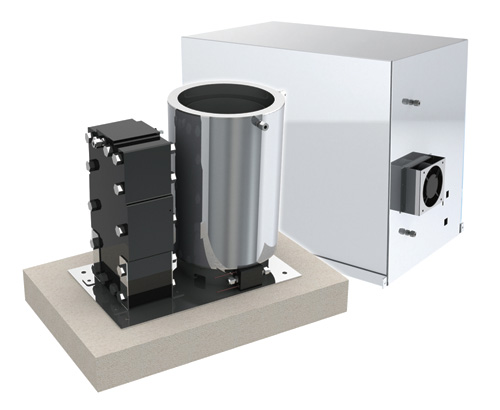 Tech startup Element One this month launched a product that transforms methanol and water into hydrogen, paving its way to enter markets in the developing world. Its “Pegasus hydrogen generator” could provide fuel for hydrogen cells that power rapidly expanding telecommunication networks.
Tech startup Element One this month launched a product that transforms methanol and water into hydrogen, paving its way to enter markets in the developing world. Its “Pegasus hydrogen generator” could provide fuel for hydrogen cells that power rapidly expanding telecommunication networks.
 |
Element One has created a generator that will create fuel for hydrogen cells out of methanol and water. // PHOTO COURTESY OF ELEMENT ONE |
Tech startup Element One this month launched a product that transforms methanol and water into hydrogen, paving its way to enter markets in the developing world. Its “Pegasus hydrogen generator” could provide fuel for hydrogen cells that power rapidly expanding telecommunication networks.
Produced in partnership with Taiwanese manufacturer CHEM, the Pegasus is poised to overcome a major obstacle in the use of hydrogen fuel cells as backup power sources. These backup systems use canisters that weigh up to 200 pounds to store hydrogen, a big transportation headache. “Our technology allows us to create hydrogen on demand,” says Element One COO Robert Schluter. Armed with the Pegasus, more remote locations can produce hydrogen from on-site 55-gallon drums of a methanol-water mixture. “A gallon and a half of methanol produces approximately the same energy as a [hydrogen] canister,” Schluter says.
So far this year, between 30,000 and 80,000 telecom towers and associated backup power units have been built in India, according to David Martin of Dantherm Power, a Danish company that makes emergency backup systems and is a potential customer of Element One. “At least half of these are off the grid,” he says.
Industry analysts emphasize the growing application of fuel-cell technology. “We are moving from the information age to the energy age to fuel economic growth,” Ruth Cox of the U.S. Fuel Cell Council says of the importance of energy access for telecommunications networks. Founded earlier this year, Element One has invested $650,000 in the production of the Pegasus units and plans to hire eight Bend-based employees by next year. The company also plans to sell 1,500 units in 2011, with the break-even cost at 200 units sold.
Although the science behind the Pegasus is promising, there remain obstacles such as possible erratic maintenance of remote power stations and general fear of technology that has not been tested in the marketplace. “There are growing pains,” says Patrick Noonan with the renewable energy group at New York-based accounting firm Marcum LLP. “It’s not commercially proven yet.”


